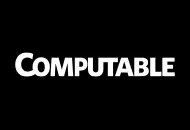Univé Verzekeringen, a large insurance company in The Netherlands, is a not-for-profit co-operative society-its customers are also its members. As such, the company's business concept is focused on providing the best possible services to its members/customers. Univé offers a complete range of insurances and financial services, such as life and non-life policies. Univé serves both the consumer and the business markets. The company's ambition is to become the preferred provider of insurance products for consumers in the Netherlands, and to be among the top three in terms of price-performance ratio of its products. Univé has about 1.3 million customers and has issued a total of 3.7 million insurance policies. The company employs more than 3,100 people.
In 2004, Univé defined a new vision for its information systems architecture. This mind shift introduced a Services Oriented Architecture (SOA) within the Univé organisation. The former stove pipe approach was replaced by a new architecture in which components, or 'services,' collaborate to deliver the required functionality. This new multi-tier architecture was developed around the requirements of the business users, ensuring that Univé's services network was aligned with its business goals. Univé selected AmberPoint's runtime governance solutions to ensure the health of its SOA-based systems. AmberPoint's SOA Management System uses a ground-breaking policy-based management approach that helps organisations achieve better, more adaptive end-to-end control of evolving services-based applications. This is achieved by dynamically implementing policies in the runtime environment.
Two Types of SOA Applications and Hundreds of Web Services
"We have two types of applications in our SOA architecture," said Bob Alberts, Project Manager for Univé. "The first relates to our insurance quotations, which is core to our business, and the second relates to our back office workflow functionality. We process approximately 100,000 health insurance quotations a year. We've been able to automate the workflow for new quotations and have considerably streamlined our processes. Sixty percent of all new health insurance policies are automatically registered into our mainframe. The need to govern the runtime behaviour of such critical business processes is of paramount importance and AmberPoint gives us the visibility and control we need to be confident that our systems are supporting the business need. All of the cross checking is automated without the need for human interaction, unless they are cases that require special attention. That's a significant saving of both time and money on 100,000 quotations a year and those savings go directly to our bottom line."
The applications managed by AmberPoint are critical to Univé's business. Recent changes to Dutch law opened up the Health Insurance market. This introduced a greater competitive dynamic in the insurance market. Since it's possible to change health insurance once a year, before 1 February, November and December are peak periods of activity for Univé. The ability to automate sixty percent of all new health insurance quotations has spurred Univé to automate other areas of its business divisions.
"We are now looking at extending the same automation for our other insurance products, using AmberPoint to provide the runtime governance across our business" added Alberts. "Project work has already commenced for automobile, home and personal insurance policies, which will be rolled out in 2008 using the same principle. For example, whenever we receive a request for an automobile insurance quote, we have to do a lot of cross checks, such as license plates, car registration, etc. These will all be automated and routed directly into our mainframe. This saves us considerable time and money, and also enables us to bundle products rather than using multiple applications. Before, we would have had to do things manually in a paper-based system. Without AmberPoint we would have had to invest significant time and money in developing the infrastructure needed to ensure that we could support this level of automation on a SOA-based platform. With AmberPoint underpinning our applications, we save time, save money and provide a faster service to our customers."
"So far we have implemented seventy four .NET Web services with 177 end points or individual services," said Erwin Kersten, Infrastructure Designer for Univé. "We're using Web Services to deliver quotations, registrations, mutations, leverage internal customer information to make quotes, connect with our mainframe, as well as connect with external services to cross check against fraud."
Phased Deployment
At present, the Web services are being used by approximately 1,800 internal customers. The next phase for Univé, which is scheduled for the fourth quarter of 2007, will be to deploy the services and applications being governed by AmberPoint's SOA infrastructure over the Internet, where it will be accessed by millions of customers using self-service applications. With numerous different services already deployed, Univé has found a unique way of graphically expressing how different services communicate with each other.
"At the front end, our internal users have either a smart client or a SharePoint Portal Server," explained Kersten. "When a query is made, it is retrieved through one of the Web services-either from an internal database, from the mainframe or from an external service via the Internet-for a fraud check. With so many services handling so many queries it can be easy to lose track of dependencies. AmberPoint gives us a complete graphical representation of all of these complex services. We call this our 'Chain of Services.' Without AmberPoint it would look like a big plate of spaghetti and would be an unmanageable mess. AmberPoint gives us the visibility we need to keep track of all the dependencies of each service we deploy."
Another critical area for Univé has been the ability to measure and maintain service level agreements. Before the introduction of AmberPoint, Univé had no information on overall response times, usage or availability of services. Since going live, the company is able to guarantee response times and is currently in the process of applying overlay to each service.
"Our SLAs before were based on the performance of the total infrastructure, not the individual services," added Kersten. "Now AmberPoint is able to trigger an alert for every single service, monitoring performance for every Web service we deploy. We also now have a central point of fault management and exception management. This means we now have the ability to measure both input and output, which gives us powerful information to track and analyse. Overall, we can pinpoint problems much faster and handle them through a centralised point. AmberPoint is non-invasive, which means it integrates seamlessly into our existing environment and we haven't had to do anything different in developing our systems."
At the end of 2007, Univé will also integrate AmberPoint SOA Management System with Microsoft Operations Manager (MOM), using AmberPoint's adapter for MOM. This integration will provide additional insight into the company's normal lifecycle of incidents, while also speeding up querying and processing.
"Moving forward, we will look at automating all the processes in the business, both at our front and at our back office to gain competitive market advantage," concluded Alberts. "Behind all the complex services and software, it all comes down to one thing. In the insurance market, it's all about the costs of a policy, which should be as low as possible. AmberPoint is playing a critical role in helping us achieve that."
In short
Industry
Insurance
Benefits
Complete graphical representation of numerous complex services, keeping track of dependencies of each service Ability to run natively in the .NET framework, enabling Univé to better leverage the advantages of their native platform, while ensuring the performance and well being of their services-based applications Ability to measure SLAs on the performance of individual services. AmberPoint is able to trigger an alert for every single service, monitoring performance for every Web service deployed Central point of fault management and exception management, providing the ability to measure both input and output, and pinpoint problems much faster Non-invasive and non-disruptive, providing seamless integration into Univé's existing environment
AmberPoint Management Capabilities
Real-time visibility into system performance and behaviors across the complete network of services Ability to track and graphically represent complex dependencies of hundreds of Web Services Ability to measure and maintain Service Level Agreements for each individual Web service Central point of fault management and exception management
Technology Environment
Microsoft .NET 1.1
Microsoft Windows 2003
K2 Workflow
Microsoft Operations Manager 2005



